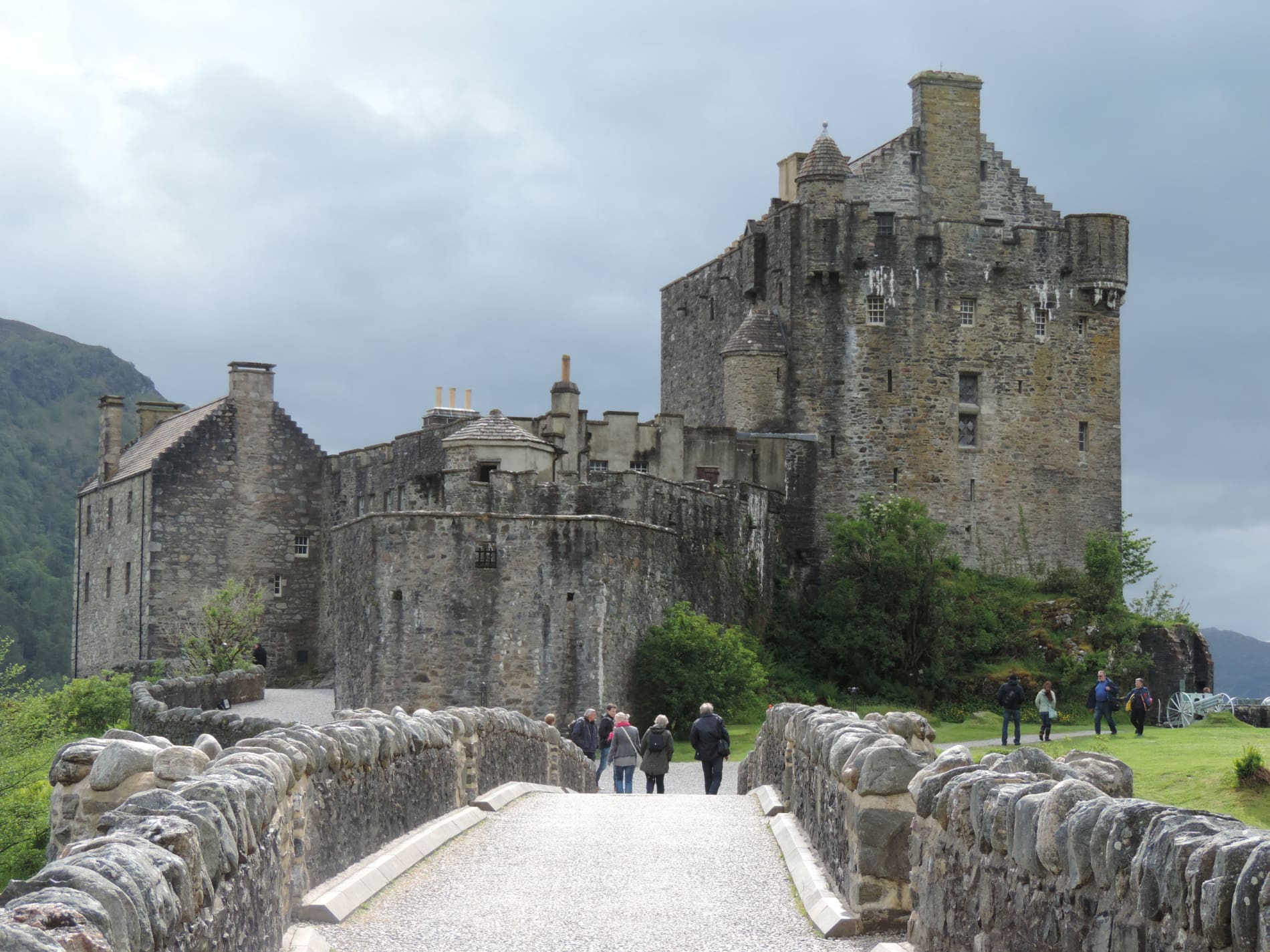


Following the Union of the Crowns, James VI had the military strength to back up any attempts to impose some control. They made this distinction by separating Germanic "Scots" English and the Gaelic by renaming it "Erse" a play on Eire. The Highlands were seen as the overspill of Gaelic Ireland. The Scots of the Lowlands viewed the Highlanders as backwards and more "Irish". Scottish kings, particularly James VI, saw clans as a challenge to their authority the Highlands was seen by many as a lawless region. Historically, the major social unit of the Highlands was the clan. While the Highland line broadly followed the geography of the Grampians in the south, it continued in the north, cutting off the north-eastern areas, that is Eastern Caithness, Orkney and Shetland, from the more Gaelic Highlands and Hebrides. Historically, the "Highland line" distinguished the two Scottish cultures. Scottish English (in its Highland form) is the predominant language of the area today, though Highland English has been influenced by Gaelic speech to a significant extent. The terms are sometimes used interchangeably but have different meanings in their respective languages. In Scottish Gaelic, the region is known as the Gàidhealtachd, because it was traditionally the Gaelic-speaking part of Scotland, although the language is now largely confined to The Hebrides. Stalking in the Highlands by James Giles, 1853īetween the 15th century and the mid-20th century, the area differed from most of the Lowlands in terms of language. It is the most mountainous part of the United Kingdom. The Scottish Highlands is the only area in the British Isles to have the taiga biome as it features concentrated populations of Scots pine forest: see Caledonian Forest. However, the Highlands also includes parts of the council areas of Aberdeenshire, Angus, Argyll and Bute, Moray, North Ayrshire, Perth and Kinross, Stirling and West Dunbartonshire. The Highland Council is the administrative body for much of the Highlands, with its administrative centre at Inverness. At 9.1/km 2 (24/sq mi) in 2012, the population density in the Highlands and Islands is less than one seventh of Scotland's as a whole, comparable with that of Bolivia, Chad and Russia. 1841 and for the next 160 years, the natural increase in population was exceeded by emigration (mostly to Canada, the United States, Australia and New Zealand, and migration to the industrial cities of Scotland and England.) : xxiii, 414 and passim The area is now one of the most sparsely populated in Europe. During the 18th and early 19th centuries the population of the Highlands rose to around 300,000, but from c. The area is very sparsely populated, with many mountain ranges dominating the region, and includes the highest mountain in the British Isles, Ben Nevis. The Scottish Highlands are renowned for their natural beauty and are a popular subject in art (here depicted by Henry Bates Joel)


 0 kommentar(er)
0 kommentar(er)
